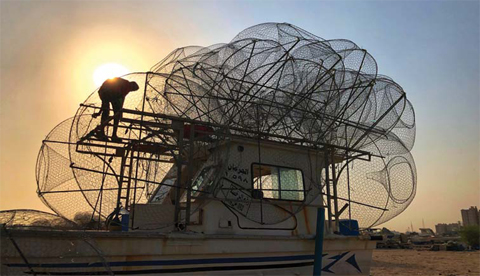In the vast open areas beyond Fahaheel, the air smells of the sea. The sun has nearly set, and it's time for fishermen to return to their homes. But before doing so, you can see them gearing up their fishing kits for another day. Thousands of huge fish traps - known in the region as gargoor - are neatly placed in a way that attracts the attention of passersby.
Other fishermen hang traps on their boats, and a little ahead are two fishermen assembling new fish traps with strong ropes. "All the fish traps are imported from the UAE unassembled," Saldoq, one of the fishermen, told Kuwait Times. "I've been working here for five years on fish trap assembly. It may look easy, but it takes a lot of tensile strength to ensure it withstands the crush of fish inside," he added.
Fishing with fish traps is banned in some countries. On the other hand, some governments do not want to wipe out the history of traditional ways of fishing, which is considered an ancestral heritage. So strict conditions have been imposed to make it more environmentally friendly. For instance, all fish traps must be made of eco-friendly materials. Secondly, traps should have small gaps to allow smaller fish to escape; and finally, fishing should be done at a certain distance from the shore.
Saldoq said he has been fishing here for over 15 years. The boat is owned by a Kuwaiti who sells the fish caught at the fish market of Fahaheel. "We go fishing twice a week - 15 hours each time. We separate the fish and return the young to the sea," he explained.
So, what attracts fish to the gargoor? It's the ready-to-eat fish placed inside - nicely cut and salted as if marinated for a BBQ! And just like those fish, your eyes will be caught by the splendor of the scene.
By Athoob Al-Shuaibi











